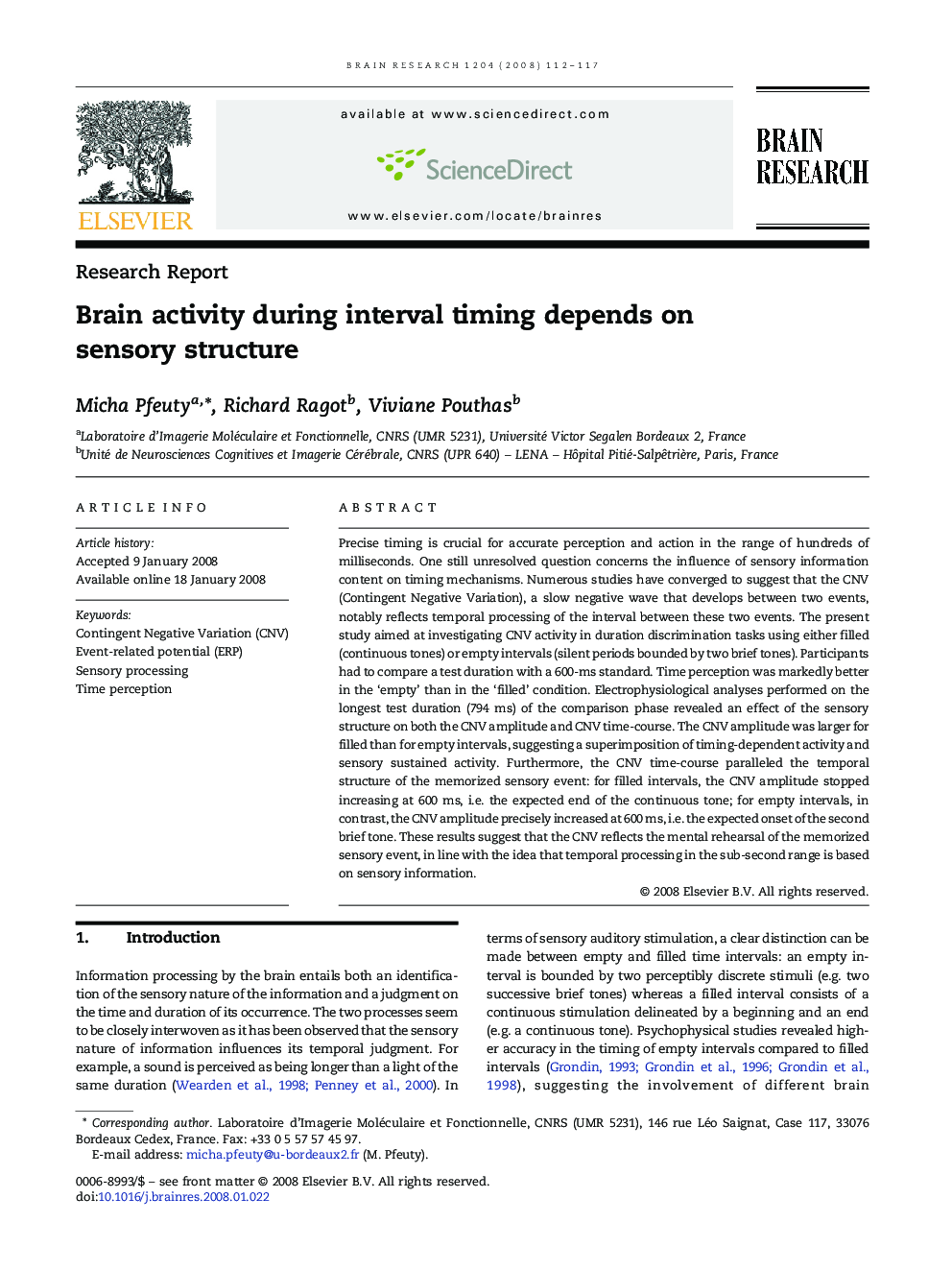| Article ID | Journal | Published Year | Pages | File Type |
|---|---|---|---|---|
| 4329830 | Brain Research | 2008 | 6 Pages |
Abstract
Precise timing is crucial for accurate perception and action in the range of hundreds of milliseconds. One still unresolved question concerns the influence of sensory information content on timing mechanisms. Numerous studies have converged to suggest that the CNV (Contingent Negative Variation), a slow negative wave that develops between two events, notably reflects temporal processing of the interval between these two events. The present study aimed at investigating CNV activity in duration discrimination tasks using either filled (continuous tones) or empty intervals (silent periods bounded by two brief tones). Participants had to compare a test duration with a 600-ms standard. Time perception was markedly better in the 'empty' than in the 'filled' condition. Electrophysiological analyses performed on the longest test duration (794Â ms) of the comparison phase revealed an effect of the sensory structure on both the CNV amplitude and CNV time-course. The CNV amplitude was larger for filled than for empty intervals, suggesting a superimposition of timing-dependent activity and sensory sustained activity. Furthermore, the CNV time-course paralleled the temporal structure of the memorized sensory event: for filled intervals, the CNV amplitude stopped increasing at 600Â ms, i.e. the expected end of the continuous tone; for empty intervals, in contrast, the CNV amplitude precisely increased at 600Â ms, i.e. the expected onset of the second brief tone. These results suggest that the CNV reflects the mental rehearsal of the memorized sensory event, in line with the idea that temporal processing in the sub-second range is based on sensory information.
Keywords
Related Topics
Life Sciences
Neuroscience
Neuroscience (General)
Authors
Micha Pfeuty, Richard Ragot, Viviane Pouthas,
